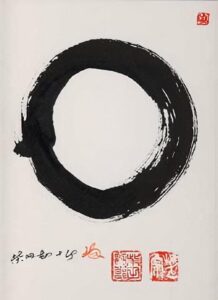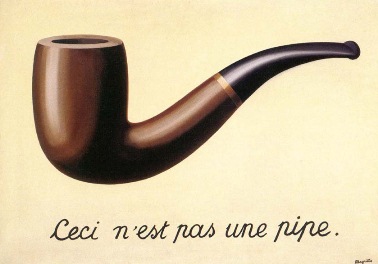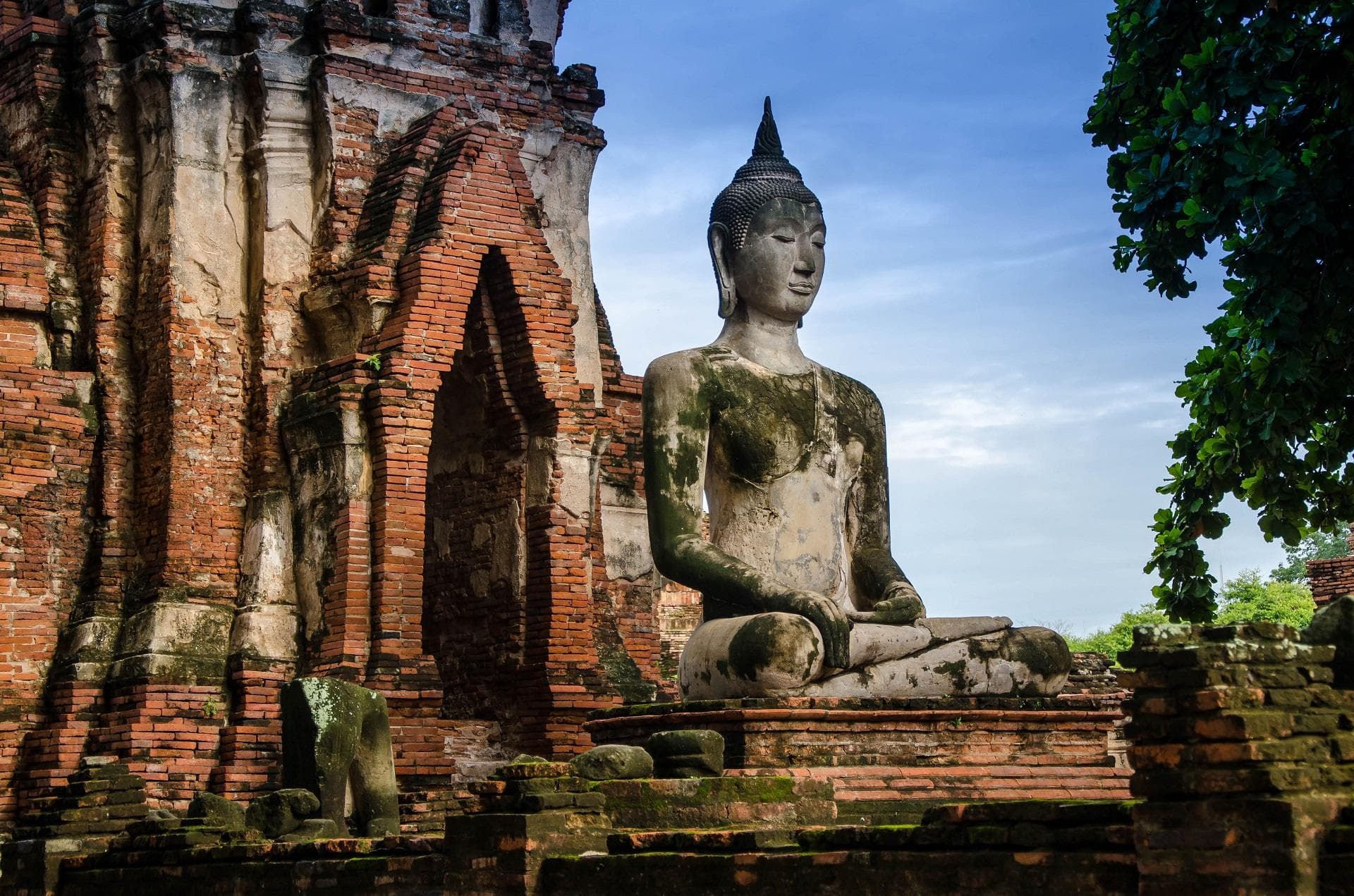Words are not truth. Truth is like the moon, and words are like my finger. I can point to the moon with my finger, but my finger is not the moon. Do you need my finger to see the moon?
Huineng
On the path to understanding Buddhism, it’s sometimes helpful to encounter ideas illuminating our confusion. One that helped me was the Buddhist idea of Two Truths.
I learned this after pondering the Ship of Theseus, so here is a brief recap: The Ship of Theseus is the Fallacy of the Heap, which asks, ‘ What makes a thing whatever it is?’ If its parts change, where is its identity, its essence? Eastern religions use a chariot as an example, but it’s the same question. If we swap out a part, is it still the same thing?
Nagarjuna exposed the Two Truth doctrine in his masterwork, the Mūlamadhyamakakārikā, the Treatise or Root Verses on the Middle Way, a significant part of Mahayana Buddhism.
Conventional Truth
Conventional Truth (Samvriti) is about our fabricated ideas to discuss the world. We invent maps, models, beliefs, concepts, and ideas to describe our existence. It’s also the sign, symbols, picture and even simulations the we create. Conventional truth is how we habitually perceive and think about the world. It’s the practice of defining things and how they relate.
We create objects by establishing a boundary, a definition that separates, ‘it is this, but not this‘. A thing that exists is an object separated, defined, and categorised. One example is the Object-Subject distinction. I am a subject (Richard) manipulating an object (say, a pen). Language and thinking to impute an ‘I’ as a separate self, using this another separate thing called a ‘pen’.
This use of language is a tacit agreement as to what words and ideas stand for, the classification and valuation of all things. Such an agreement has to happen so we can communicate our ideas.
This language implies that there are essences as objects or objects with an essence. A feature that makes an apple an apple is an essence that makes a person that person.
Ultimate truth
Ultimate Truth (Satya) is a different way of looking at the world. Here, existence is seen as a changing, interdependent web. There are no objects or ideas. The Ultimate Truth Buddhists ascribe to is seeing beyond the language and thought, to perceive and understand all existence as interconnected, whole.
The Ultimate truth of Sunyata explains that all phenomena are empty of essence; there are no separate objects that exists., or objects with an intrinsic enduring existence. I’ll go into Emptiness more in another post as it so central to Mahayana Buddhism.
As a side note, none of this is about what exists; it is about the distinction between reality and the mind that thinks about it. In the case of the Ship of Theseus, there is the ship itself (Ultimate Truth) and the name we give it (Conventional Truth). We have two views upon this reality: one based on definitions and separation, and the other based on unity, devoid of separate objects.

The Conventional Truth is then practical: our fabricated knowledge and ideas. We describe and build theories and create philosophies, art, science and religion. In our everyday lives, we think of separate phenomena, objects like tables, chairs, cats, nations, etc. Each phenomenon has itself made up of parts, each of itself also seemingly separate, and these parts have their parts.
The reason for the duality is that reality is so complex and changing that the conscious mind cannot comprehend it, so it has to abstract and simplify what it perceives. Such abstraction leads to the maps and models we make.
The problem is that concepts are always imperfect abstractions of reality. They help explain, but they also mislead us. Or, as I like to put it, ‘Within every conception there is a misconception‘.
Imagery of Two Truths
Two Truths have been imagined in various ways. In Tibetan Buddhism, it’s the image of holding up a cup with your bare hands and then with a cloth. We grasp not the reality of the cup’s existence but the surrounding fabric. The cloth is a metaphor for the language and concepts of Conventional Truth. Another example I’ve encountered is ‘The Finger that points at the Moon.’ The finger is not the Moon but the Convenient Truth that points toward it, just as the word ‘pear’ points to a real pear.
For Art there is Rene Margarite and the The Treachery of Images where it says, ‘This is not a Pipe’. That’s correct it not a pipe it’s an image of a pipe. Meaning its an idea about a real object. The image then is not reality but about reality. Same with One and Three Chairs by Joseph Kosuth. There is the real chair, the image of a chair and the word ‘chair’. The image and the word refer to the real chair.
The Enso symbol, a circle of ink, represents the present Conventional Truth, with the emptiness of the essence at its centre. Buckminster Fuller sees it as pattern integrity—take a rope, make a knot, and move the knot along the rope. The knot’s atoms change, but the knot remains.


Alan Watts makes a helpful analogy, ‘…such conventions may be seen from the question, ‘What happens to my first noun-object when I open my hand?’ Alan Watts
Misunderstandings and Shortcomings
‘To see is to forget the name of the thing one sees.’
Paul Valéry
It’s important to point out that one truth is not superior to the other, and neither are they separate; one is not higher than the others, purer, or on a different level; both are required in our lives. The Two Truths are ways of seeing and operating in the world. We need Conventional Truth because it’s useful to communicate and navigate reality. But we also need the Ultimate Truth to remind ourselves that we are subject to illusion and falsehood.
Our minds parse the cosmos into an abstract reality of many things, the Conventional Truth. We clothe reality with ideas and language, a fabricated veil of illusion over the non-fabricated reality, devoid of such inventions, which I look at more in Tathata. The illusion of separation, is dispelled because upon closer inspection, we can see reality is interconnected, with no intrinsic existence—it is all in flux, the distinction and definition we made fall apart. This what the Sorites Paradox tells us.
A critical point that needs to be made is the Ultimate Truth is beyond language or metaphor, you can merely point at it with the tool of language an imagery, never grasp it. It’s what makes sense of the Self, an illusion. It appears to be there because of the conventions of language and perception, but a closer look sees the emptiness of Ultimate Truth through that illusion.
Closing
All of reality is seamless; it is our mind that creates the gaps we perceive.
In understanding Buddhism, I have found the Two Truths very helpful. The idea has pulled me out of the mind-bending confusion from trying to grasp this religion. It leads to a better understanding of other Buddhist terms, including Sunyata or Emptiness, Tathata or Suchness. It also speaks of our everyday existence. Conventional Truth is filled with ideas and objects we use to navigate life. However, Ultimate Truth reminds us that such an image is valid but misleading. Misunderstanding reality leads to our and others’ suffering.
As Alan Watts points out again.
“For the function of these nonsense terms is to draw our attention to the fact that logic and meaning, with its inherent duality, is a property of thought and language but not of the actual world. Consequently it contains no duality. For duality arises only when we classify, when we sort our experiences into mental boxes, since a box is no box without an inside and an outside.”
What’s going on here is how our minds habitually work. The source of confusion is the mental habit of chopping up reality into pieces. By creating boundaries and definitions, we give ourselves a false impression that reality is in pieces, made of independent objects and subjects. This shows that our understanding of the cosmos is filtered through the lens of our consciousness; we don’t stop considering how that lens may distort our perceptions.
O’Brien, Barbara. “The Two Truths in Mahayana Buddhism.” Learn Religions, Feb. 11, 2020, learnreligions.com/doctrine-of-the-two-truths-450002.
Image by Mathieu Vivier from Pixabay

